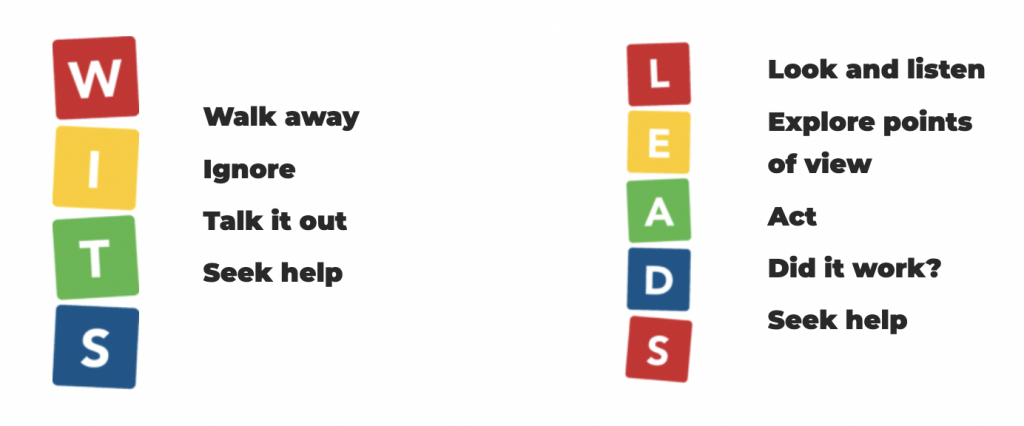Online Safety
- Be nice. Mean behaviour is not OK. We expect our kids to treat others with respect, and to never post hurtful or embarrassing messages. And ask them to always tell you about any harassing or bullying messages that others post.
- Think twice before hitting “enter.” Remind kids that what they post can be used against them. For example, letting the world know that you’re on vacation or posting your home address gives would-be robbers a chance to strike. Kids also should avoid posting specific locations of parties or events, as well as phone numbers.
- Follow the “WWGS?” (What Would Grandma Say?) rule. Teach kids not to share anything on social media that they wouldn’t want their teachers, college admissions officers, future bosses — and yes, grandma — to see.
- Use privacy settings. Privacy settings are important. Go through them together to make sure your kids understand each one. Also, explain that passwords are there to protect them against things like identity theft. They should never share them with anyone, even a boyfriend, girlfriend, or best friend.
- Don’t “friend” strangers. “If you don’t know them, don’t friend them.” This is a plain, simple — and safe — rule of thumb. Let them know that kids who follow friends are generally happier than those who follow strangers.
read our school Code of Conduct here
It’s also at the front of your Planner.
And in a frame on the wall outside of our classroom door.
Conflict Resolution Tips: Brain Pop watch this video 04:28
PRIMARY GRADES (WITS) INTERMEDIATE GRADES (LEADS)
Is your kid ready for a Smartphone?
Take the quiz
What is bullying?
It’s not a fun game or a cool way to impress your friends. In fact, it’s quite the opposite.
Bullying is when someone repeatedly tries to hurt or humiliate another person on purpose. It can be physical, like hitting, pushing or tripping someone, or it can be verbal, like calling someone mean names, spreading rumours, or making fun of someone’s appearance, religion, or culture.
Bullying can happen at school, on the playground, in your neighbourhood, through texting, or even online. And l let me tell you, it’s never a laughing matter. Bullying can cause serious harm to the person being bullied, both physically and emotionally. It can make them feel sad, scared, lonely, sick, or even depressed.
What is cyberbullying?
It’s when someone uses technology, like a phone or computer, to hurt or embarrass someone else.
For example, someone might text you mean messages or post hurtful or threatening comments about you on social media. Cyberbullying can also include spreading false rumours about you or posting embarrassing pictures or videos online without your permission.
Cyberbullying can be really hurtful because it can be public, and it can happen anytime. The bully doesn’t have to be near you to be mean. It can be scary because you may feel like you can’t get away from your bully.
source: https://www.bullyingcanada.ca/what-should-kids-know-about-bullying
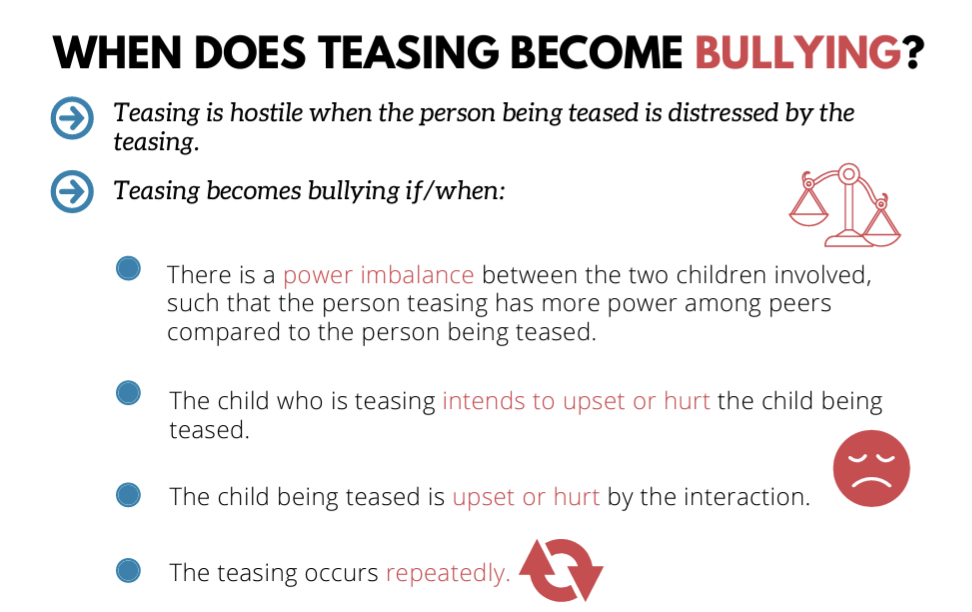
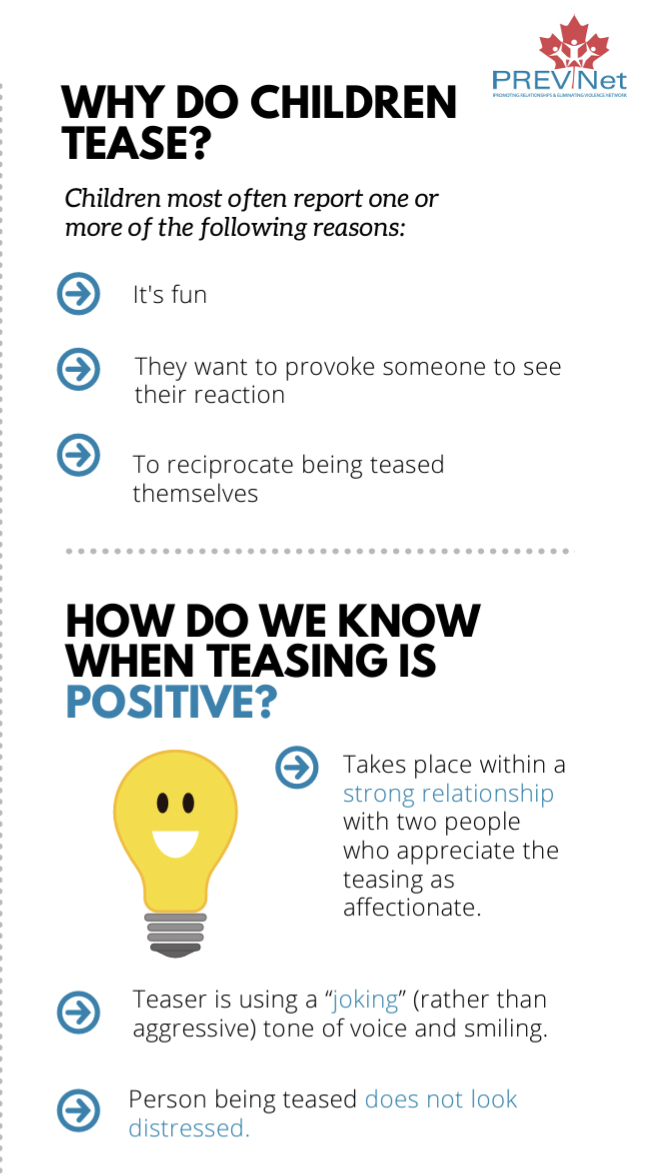
Responding to Cyberbullying
Top Ten Tips For Teens click here
Wheel of Fortune Game: End Bullying click here
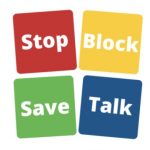
- Stop
Log off the site where the bullying is happening - Block
Block the person who is targeting you, and report them to the site you’re on. Do not respond to the messages and comment. - Save
Save the message or comment to show an adult. - Talk
Tell someone you trust what is happening
IT’S NOT JUST BULLYING–IT’S CRIMINAL
- How the law addresses cyberbullying: Canadian article
- Cyberbullying can be criminal: Canadian article
- Possible Criminal Charges Canadian govt. website
- Children’s Online Privacy Protection Act, USA, 2000 (COPPA) wikipedia
Several provinces and territories have laws specifically dealing with online and offline bullying:
The Education Act of Ontario now includes a specific definition of “bullying”: “bullying” means aggressive and typically repeated behaviour by a pupil where,
(a) the behaviour is intended by the pupil to have the effect of, or the pupil ought to know that the behaviour would be likely to have the effect of,
(i) causing harm, fear or distress to another individual, including physical, psychological, social or academic harm, harm to the individual’s reputation or harm to the individual’s property, or
(ii) creating a negative environment at a school for another individual, and
(b) the behaviour occurs in a context where there is a real or perceived power imbalance between the pupil and the individual based on factors such as size, strength, age, intelligence, peer group power, economic status, social status, religion, ethnic origin, sexual orientation, family circumstances, gender, gender identity, gender expression, race, disability or the receipt of special education.
COPPA USA: The Act, effective in 2000, applies to the online collection of personal information by persons or entities under U.S. jurisdiction about children under 13 years of age, including children outside the U.S. if the website or service is U.S.-based. It details what a website operator must include in a privacy policy, when and how to seek verifiable consent from a parent or guardian, and what responsibilities an operator has to protect children’s privacy and safety online, including restrictions on the marketing of those under 13.
IF YOU WITNESS WHAT IS HAPPENING
Don’t be a by-stander. Stand up to cyberbullying when you see it. Take action to stop something that you know is wrong!
- What do you believe is the right thing to do if you witness it happening? click here
- Do the right thing: a couple of Videos thru TelusWise click here
- Standing Up To Cyberbullying: Top Ten Tips For Teens click here
- When you see bullying: Take Action crossword
- Lift Each Other Up word search
- Dear Anonymous video 01:54
- #End bullying for gamers play Kahoot game
- End bullying Wheel of Fortune play the slideshow
3 Scenarios: Witnessing Cyberbullying. What should you do?
END BULLYING TIPS FOR ONLINE GAMERS
- click here for comics
- #End bullying for gamers play Kahoot game
POSTERS & TIP SHEETS
Standing Up To Cyberbullying: Top Ten Tips For Teens click here
Responding to Cyberbullying: Top Ten Tips For Teens click here
12 Quick Privacy Tips For Parents click here
Tips for parents on what to do when your child cyberbullies others click here
VIDEOS
Travis Price re Pink Shirt Day YouTube 04:00
Common Sense Education:
- What is Digital Citizenship? YouTube 00:40
- Digital Safety Tips: Mean Comments Video 0:59
- Rings of Responsibility YouTube 01:50
- What’s In Your Digital Footprint? YouTube 01:19
- Teen Voices: Oversharing and Your Digital Footprint YouTube 03:34
- Teen Voices: Presenting Yourself Online YouTube 02:10
- Teen Voices: Who Are You On Social Media? YouTube 05:28
- Teen Voices: Digital Drama YouTube 04:14
Empathy and Communication YouTube 01:30
Do the right thing YouTube 01:58
Make an impact when you witness cyberbullying YouTube 01:42
Explore – Connecting with Kindness: Digital Drama. With your class, or on your own, watch this pause-and-play lesson on digital drama.
Dear Anonymous video 01:54
WEBSITES
http://Canada.ca/cyberbullying
PREVNET: Promoting Relationships & Eliminating Violence Network
LESSONS
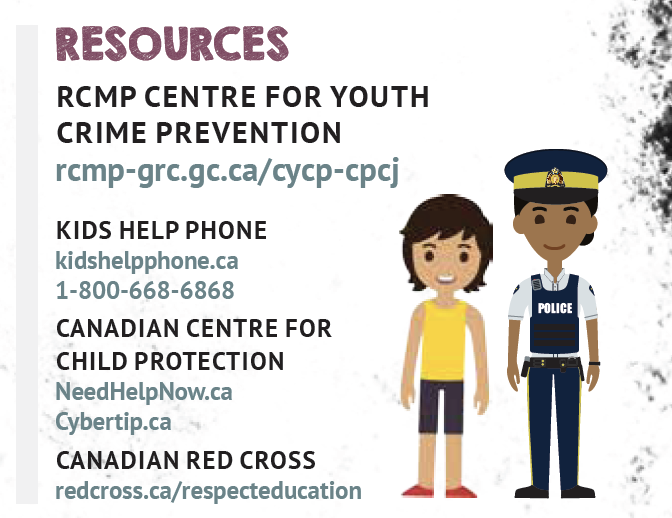
https://www.bullyingcanada.ca/get-help
REMOVING A SEXUAL PICTURE OR VIDEO
If you are worried a nude of you under the age of 18 is being shared online, we are here to help. There are steps you can take to regain control, and people to support you.
SEXTORTION
Canada’s national tip line for reporting the online sexual exploitation of children.
SCENARIOS
14 scenarios of online harassment, with Questions, grades 6 and up (Cyberbullying Research Centre, USA)
Examples (Hockey Canada)
3 Scenarios: Witnessing Cyberbullying. What should you do?
Real Life Cases (BC)
- Reena Virk, died age 14, Saanich, Vancouver Island, 1997 (bullied and killed)
- Amanda Todd, died age 15, Port Coquitlam, 2011 (sextortion)
- Carson Crimeni, died age 14, Abbotsford, 2019 (manslaughter; drug overdose)
- 12 year old boy in Prince George, died 2023 (sextortion)
- 13 year-old girl swarmed in Kelowna, BC, Sept 27, 2024 (swarming)

